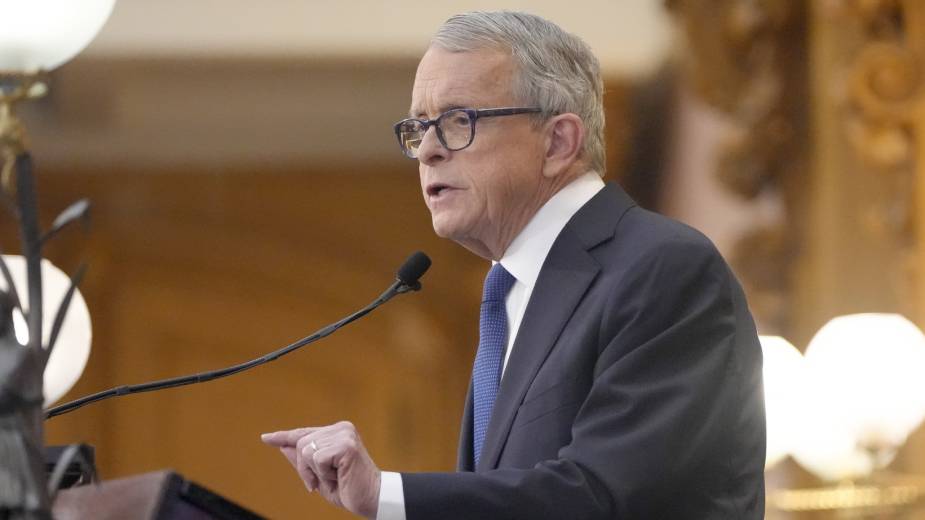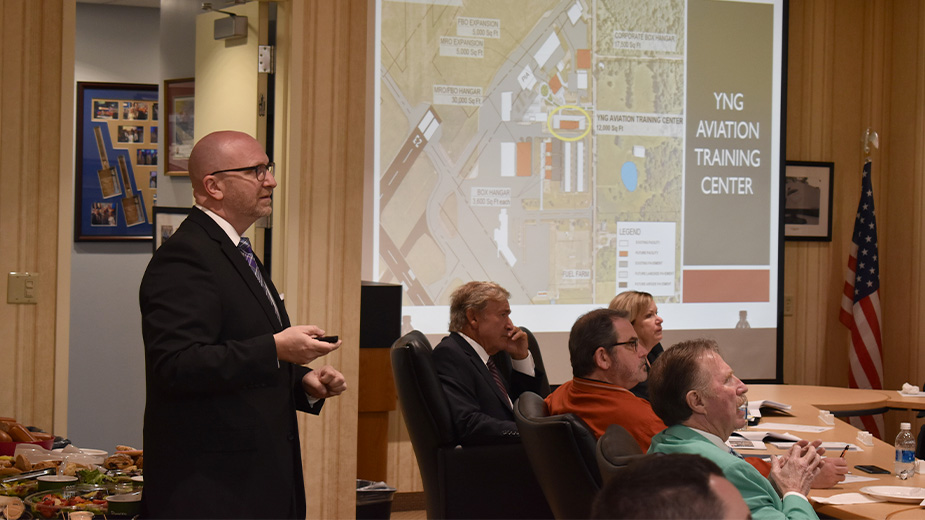YSU Center Presents Economic Development Plan
YOUNGSTOWN, Ohio – After two years of research, drafting and developing an economic development plan for the city, the Center for Urban and Regional Studies at Youngstown State University Tuesday presented its plan to city officials and stakeholders.
The 465-page Citywide Economic Development Strategic Plan outlines areas that have space for development, an analysis of comparable cities, the Economic Action Group’s Downtown Vision and Action Plan and a new branding initiative.
“This is a tall order and a large plan,” said Ron Chordas. “It will take many years to accomplish. It will take a lot of working together to accomplish. If we can implement these strategies, then we can transform Youngstown.”
Chordas is the executive director of the Center for Urban and Regional Studies.
For the plan to succeed, Chordas emphasized, the city’s stakeholders must be willing to work together.
“In the past, when we’ve done this, we’ve wound up with some infighting and people not cooperating,” he said. “This develops a good plan for the future of the city. It’s up to us to look at if we have the capacity and competency to do this.”
An inventory of lots lays out opportunities for development along the major corridors and some sites off major thoroughfares.
Along the corridors are seven sites spread over 11 acres on Belmont Avenue, six on 19 acres along Market Street and two that cover 40 acres on Poland Avenue. Off-corridor locations include sites near Landsdowne Airport, the McGuffey Plaza and Albert Street.
“For each site and opportunity, we have it all listed by parcel number, the site [address], the tax delinquency status and the owner,” said Nick Chretien, an intern at the center who compiled the inventory. “So you can look into each individual parcel and pick out what you want to know if you’re a prospective business owner looking at one of these sites.”
When looking at comparable cities to see what could be done in Youngstown, center staff looked at three main criteria: cities in the Northeast-Midwest-Great Lakes region, cities with a population of fewer than 300,000 and a metropolitan population of fewer than 800,000. The results were about a dozen cities that included Erie, Scranton and Reading, Pa., Duluth, Minn., Green Bay, Wis., and Flint and Kalamazoo, Mich.
“When you look at other cities, you not only want them to be comparable, but also aspirational. They should be something Youngstown aspires to be and maybe represents the place that Youngstown could be,” said Tom Maraffa, a geography professor at YSU who helped with the analysis.
During the presentation, Maraffa compared trends of the cities’ downtown employment, payroll and number of establishments. In all three, Youngstown was consistently near the bottom of the list, with the number of employees and establishments dropping between 2003 and 2012. But, Maraffa said, that isn’t necessarily bad news for the city.
“What it tells you is where Youngstown can go. These are cities comparable to Youngstown that may have had a longer history of economic development and planning,” he explained. “This plan is a first step. Many cities have been involved in this for a much longer time. By implementing this plan, it tells us that Youngstown has to move toward the middle for those indicators.”
For a new branding effort, YSU art professor R.J. Thompson, along with his students, came up with the “City of You,” an effort that produced a new logo and advertisements for Youngstown. The logo can be customized for the city’s departments and neighborhoods to create a unified brand across all aspects of life in Youngstown.
Thompson is also the director of Youngstown Design Works.
“One of the things I’ve found in the past four years of teaching here is that I can do anything,” Thompson declared. “I can create some really great things for my students and the community. That’s a very enabling opportunity and what’s more is that we can make it quickly.”
The art professor pointed to the success of Youngstown Design Works as an example of that.
“If I were in Pittsburgh or another larger city, Youngstown Design Works would take years to produce. Within a year, we’ve been able to help over a hundred businesses and nonprofits and raise a substantial amount of revenue that goes back to the students,” he said.
The Economic Action Group’s Downtown Vision and Action Plan has remained unaltered since it was presented earlier this year. It features goals for the area including the creation of meaningful jobs, strengthening links to YSU and neighborhoods, responsible land use and enhanced design guides.
One key feature, said action group coordinator Dominic Marchionda, is a checklist for each goal and initiative.
“We did a recommended timeframe for each objective and checkboxes to mark off. At each Economic Action Group meeting going forward, we’re going to try to see where we’re at with each one. The hope is that most or all of these initiatives are done within five years,” he said.
Fully developed save for the reaction from a few more stakeholders, Mayor John McNally says the city will look at the development plan and execute most of the ideas. While he hasn’t had a chance to review all 465 pages, McNally added the city might already be working on some of the proposals.
“I don’t expect every single recommendation to be followed to a T. But I do expect that we’re going to use a lot of those points moving forward. We don’t intend to put it on the shelf. We intend to look at it,” the mayor said. “Having a document and successes that can be tracked is very important. I expect a good chunk of this to be followed in the future.”
MORE:
YSU’s Mike Hripko discusses the plan in today’s ‘3 Minutes With’ Video
Copyright 2024 The Business Journal, Youngstown, Ohio.



